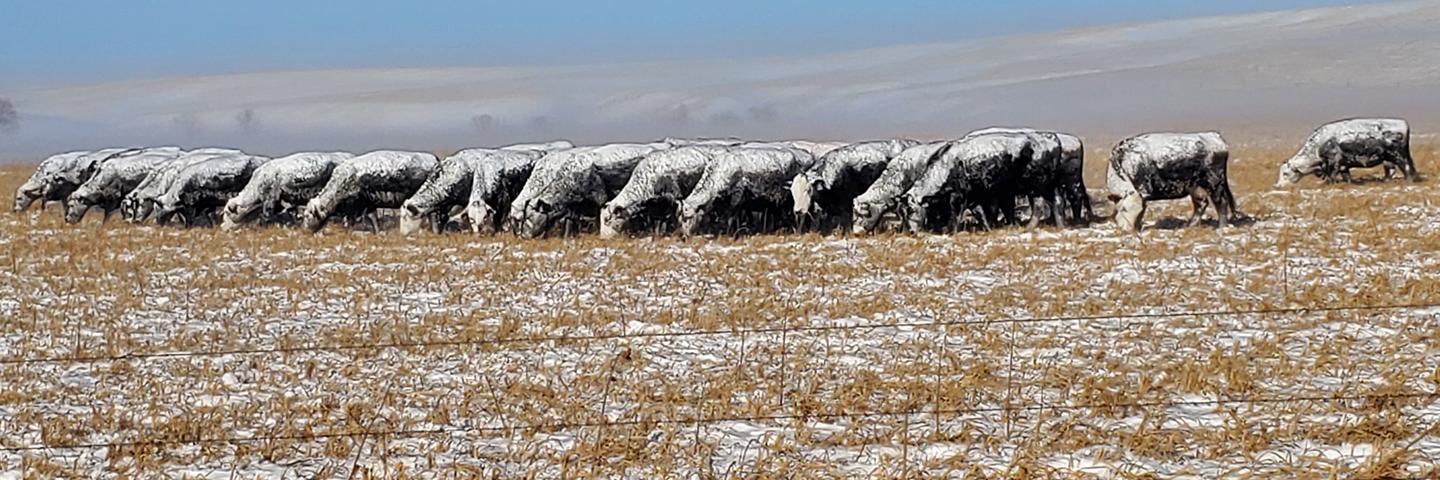Extend Grazing Season with Cover Crops

Cattle grazing cover crop mix after snowfall event in bitterly cold temperatures. Photo courtesy of Riley Kammerer taken December 22, 2022.
NATURAL RESOURCES CONSERVATION SERVICE (NRCS), Huron, South Dakota (SD), January 20, 2023 – As part of a three-year Conservation Innovation Grant (CIG) through the USDA’s Natural Resources Conservation Service (NRCS), Riley and Jimmie Kammerer of Meade County, SD, are experimenting with the use of an 11 species, season-long cover crop mixture on worn out hayfields with the goal of prolonging their grazing season and increasing soil health.
Traditionally, hayfields would be renovated by plowing and seeding a grain crop for one to two years before re-planting to alfalfa/grass hay. Cover crops are allowing them to extend their grazing period, and findings show cover crops to be more economical even during multiple years of drought. Livestock performance is improving along with their soils.
Cover crops were no-till seeded by May 29, 2022, with the same cover crop mix across all cover crop fields (6 old hayfields) totaling 285 acres. On August 16, 2022, NRCS personnel clipped an average of 6,500 pounds of forage production across all cover crop fields. An average of 1,100 pounds of hay production in adjacent hayfields was estimated based on the average number of bales harvested. Cover crop fields were again clipped on October 20 to get a better estimate of available forage before grazing and averaged about 4,900 lbs/acre. The lower amount of available forage is due to plant maturation, insects, and wildlife. Cover crop fields will be grazed by 250 head of cattle which began December 17, 2022.
The Kammerer’s are partitioning each cover crop field into paddocks using electric fence to increase the utilization rate, which is approximately 60 to 70 percent, before moving to the next paddock. This involves the entire family including their three daughters; Karlie, Katelyn, and Kymbal.
“Moving cattle from one paddock to another allows the whole family additional quality time together which everyone enjoys,” said Riley.
Based on these phenomenal results, the Kammerer’s will continue this system on other hayfields upon completion of the study which ends March 31, 2024.
For technical advice and planning contact your local NRCS Service Center at www.nrcs.usda.gov/contact/find-a-service-center. For more information about NRCS CIGs, visit www.nrcs.usda.gov/programs-initiatives/cig-conservation-innovation-grants/south-dakota/south-dakota-conservation.
#

